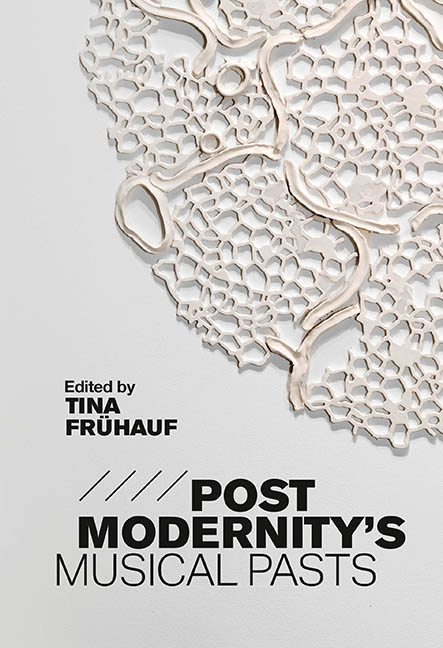Book contents
- Frontmatter
- Dedication
- Contents
- List of Illustrations
- List of Music Examples
- List of Contributors
- Acknowledgments
- About the Cover
- Introduction
- Part I Time and the (Post)Modern
- Part II Manifestations of History
- Part III Receptions of the Past
- Part IV Nostalgias and the Temporalities of Belonging
- Bibliography
- Index
3 - John Adams's Post-stylistic Approach to the Past: A Response to the Uncertain Future of a Globalized World?
Published online by Cambridge University Press: 28 April 2020
- Frontmatter
- Dedication
- Contents
- List of Illustrations
- List of Music Examples
- List of Contributors
- Acknowledgments
- About the Cover
- Introduction
- Part I Time and the (Post)Modern
- Part II Manifestations of History
- Part III Receptions of the Past
- Part IV Nostalgias and the Temporalities of Belonging
- Bibliography
- Index
Summary
John Adams's piano piece Phrygian Gates of 1977, his fi rst mature composition and his acknowledged opus 1, initiated the composer's minimalist period, which exhibits a musical style primarily based on a steady refusal of expressiveness and pathos in favor of a pure contemplation of repetitive sound architecture. For Adams, minimalism was above all a radically new means to escape from the musical academism and conformism of the East Coast composers without resorting to Cageian alternatives or to the ideological hegemony of European post-serialism embodied by Pierre Boulez's famous 1952 anathema: ‘Any composer who has not experienced … the absolute necessity of the serial system of composition is USELESS.’ In fact, Adams countered that Boulez ‘could only see music from a dialectical point of view. A new creative idea was “useless” unless it fitted into his historical tunnel vision. That particular continuum I found ridiculously exclusive, being founded on a kind of Darwinian view of stylistic evolution.’ To be sure, for Adams minimalism was also a way to erase the disappointment of his own artistic involvement in the spheres of musical experimentalism and live-electronic music, even though they played a significant role in his artistic development. For him, following the path paved by minimalist composers was a saving grace: ‘Riley, Reich, and Glass … all influenced me positively to a way out of the cul-desac in which I seemed to be stuck.’
From Harmonielehre (1984–5) onward, John Adams gradually freed himself from minimalism, integrating a wide range of musical styles from both art music and popular music. Moreover, he built his musical thought and his philosophy on a dynamic and inventive integration of musical references from the past. This compositional approach is rooted in Western musical heritage, but without seeking to demythologize it or to reproduce it faithfully with unreserved veneration. Adams's artistic evolution has led commentators and musicologists to consider him first a postminimalist composer, then a postmodernist one.4 And as for Adams himself, in 1990 the musicologist Edward Strickland summarized the composer's self-perception as follows: ‘Adams has described himself variously as “a Minimalist who is bored with Minimalism” and “more a postmodernist than a Minimalist”’. This was over two decades ago, at a time when the composer himself could not foresee how his artistic approach would evolve.
- Type
- Chapter
- Information
- Postmodernity's Musical Pasts , pp. 55 - 72Publisher: Boydell & BrewerPrint publication year: 2020



